Intrapreneurship – Part 2

As you remember in the Part 1, I shared some general definitions, and some pieces of the research study about this topic that we did in CEMEX in recent years.
Well, in this Part 2 I’d like to share the following:
- Examples of Intrapreneurship programs or cases studies
- The Collaboration between Corporate and Entrepreneurs (startups, scaleups) to accelerate innovation, and also the benefits, challenges and risks.
Telefónica – Lean Elephants program1
This program has three pillars:
- Lean Startup are the processes and the way of working in its ventures, as well as the metrics with which the company measures their progresses.
- Five different stages for their ventures and a stage gating process to move from one stage to the next one in a very similar way to the financing rounds of the venture capital world.
- To nurture the innovation funnel, the company relies on its Innovation Calls, where employees submit their ideas around the opportunity areas, they have identified for the company, and if they get selected, they are allowed to work full time on their ideas. To make sure they have a sustainable competitive advantage, they leverage on their assets but also create differential technology.
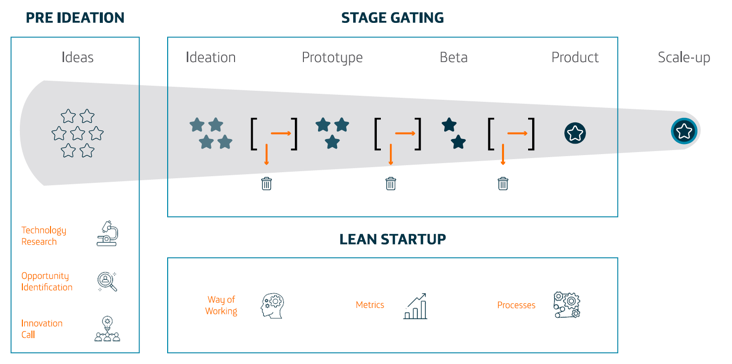
Here the 10 main lessons that Telefonica’s learned from this program1:
- Lesson 1: An end-to-end process (from idea to Commercialization)
- Lesson 2: Minimize the risk of the bets
- Lesson 3: Intrapreneurs and the right mindset
- Lesson 4: Allies (top management, RH and the rest of the company)
- Lesson 5: Setting the right environment
- Lesson 6: Strategy alignment
- Lesson 7: Global portfolio management
- Lesson 8: Measuring the impact
- Lesson 9: Scaling-up, the second valley of death
- Lesson 10: Start small and lead the change
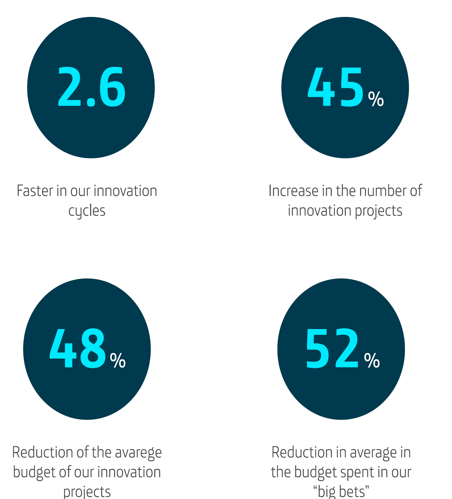
Deutsche Telekom AG – UQBATE 2
UQBATE is a program to support employees with ideas for new businesses within the corporation and aims to provide the internal entrepreneurs at Telekom a space to realize their ideas, act freely and without the influence of corporate structures and processes.
It is based around the idea of approaching customers directly and using their feedback to build ventures – first with the support of the corporation, yet ultimately as an independent entity.
UQBATE has evolved significantly in the last years and nowadays kicks off with an intense, week-long Bootcamp – the Startup Days – during which teams are formed, ideas are discussed, developed, and pitched at the end. Afterwards, the teams enter a validation and development phase which also requires them to talk to potential customers and test their hypotheses with actual feedback. This process is accompanied by several gates, each granting additional funding if certain quality criteria are met.
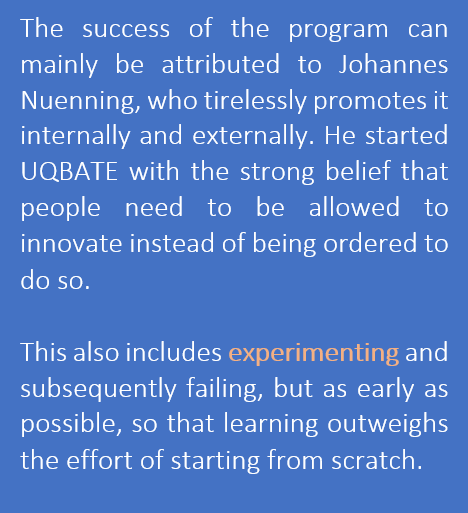
First, they have three to six months to assess actual customer needs through prototyping and interviews. The next half year is spent in determining customers’ willingness to use and pay by means of a public beta-test with a working product, and finally the teams have up to one year to develop a business model for the idea. At the end, and if all quality gates have been passed, a joint decision is made as to whether the idea will be spun off, integrated into a division, or shut down.
Since the beginning, 400 ideas have been evaluated with over 600 employees taking part in the program. Up to now, seven projects are being actively developed and are currently entering or undergoing a public beta-test phase. Among these are Zuqi – an online platform for special service providers, and MyComoda – a virtual wardrobe.
UQBATE offers a number of advantages:
- dramatically reduces the cost of the trial and error of new ideas,
- more than ten times faster than previous initiatives,
- it produces innovative ideas that generate actual revenue and,
- finds and trains entrepreneurial talent.
Now, I want to share examples about some top Intrapreneurs published in the Intrapreneur Magazine (www.intrapreneurmagazine.com), because I’m going to insisting and convince you that the employee with the Entrepreneurial mind set, have the capacity to innovate and create new businesses, doesn’t matter the size of companies are, and I encourage you to think about this, and please stop considering the employees as “los Godinez”.
The success of the companies is because they have the talent to change, improve, scale and evolve their business; and also create new ones.
| KEN KUTARAGI Sony, The Sony PlayStation He was a relatively junior employee at Sony Enterprises when he realized the potential that existed within the world of video games. It was the late 1980s and Kutaragi spent hours tinkering with his daughters Nintendo looking at ways to improve it, coming up with the idea of a sound chip. In an environment where Sony was averse to entering the gaming market, Kutaragi was able to convince Sony’s CEO Norio Ohga to back his idea and the results of his efforts was a device called the “PlayStation”. Several years later, despite continued hostility within the Sony Company towards video games, the original PlayStation was released. This was followed by a series of PlayStation devices all a step ahead of their predecessors. The commercial success of the PlayStation franchise makes the Sony Computer Entertainment the most profitable business division of Sony. Despite all his doubters, Kutaragi proved them all wrong and went on to become CEO of Sony Computer Entertainment America! | RICHARD (DICK) DREW 3M, Scotch Tap Most of us use sticky tape, masking tape or Scotch tape on a daily basis but have you ever thought of who and how it was invented? The clever time saving sticking solution was invented back in the 1920s by Dick Drew whilst he was working for 3M, back when they were the modest manufacturers of sandpaper. Drew was testing the companies new “Wetdry” sandpaper with auto mechanics when he became interested in how the two-tone paint jobs, which were so popular at the time, were difficult to manage due to the border between the two colors. Whilst pondering the problem, Drew came up with the idea of a two-inch wide adhesive backed paper strip – the world’s first masking tape! But like most new inventions, the tape was not without its own design challenges. |
| DAVE MYERS, W.L. GORE Elixir Guitar Strings Dave Myers was an employee working for Gore-Tex fabric innovator W.L. Gore when one day he was taking advantage of the company’s 10% daily allotment of ‘creative time’ to tinker with some new ideas. He began to explore how their existing products, which were used to coat push-pull cables, could actually be adapted to make guitar strings more comfortable and user friendly. What Myers discovered, was that although the coated guitar strings were only marginally more comfortable to use, they were able to keep their clear tones longer than the existing guitar strings on the market. Gore was quick to back Myers’ invention and launched their own brand of guitar strings – ELIXER strings, which is now the top selling acoustic guitar string on the market. Myers’ invention propelled W.L. Gore into an entirely new product market and shows the world just how valuable ‘creative time’ can be. | HERE ARE A FEW OTHERS … Patrick Naughton and James Gosling, Sun Microsystems, Java Dr Spence Silver, 3M, Post-it-Notes Paul Buchheit, Google, Gmail Larry Hornbeck, Texas Instruments, Digital Micromirror Device Scott Gatz, Yahoo, Sponsored search engine Kathy Hollenhurst, Caribou Coffee, Customer loyalty program |
The Collaboration between Corporate and Entrepreneurs (startups, scaleups)
According with the World Economic Forum3, here the benefits, challenges and risks. I also want to share the Corporate Startup Stars is a set of awards run by Nesta and Mind the Bridge4, to recognize large firms which have gone out of their way to work with startups.
BENEFITS
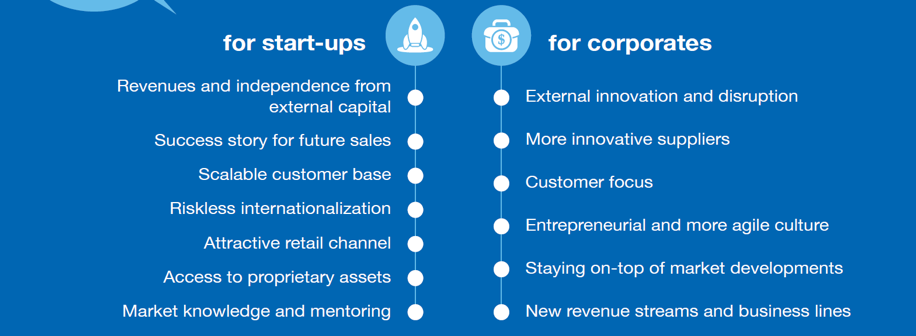
CHALLENGES

RISKS
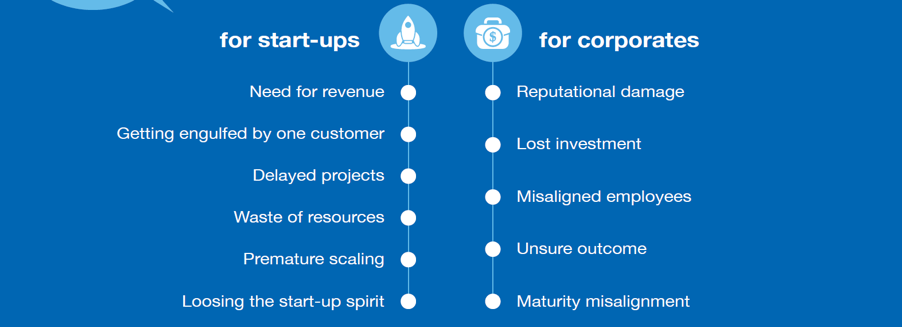
BONUS
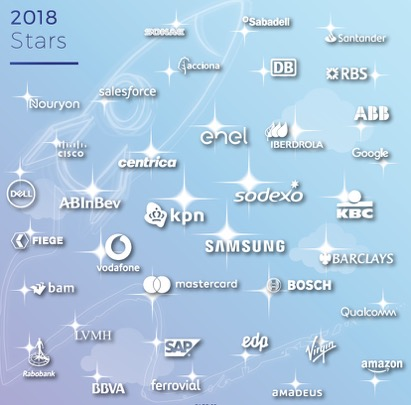
Thank you
Martin Herrera
CEMEX | Digital Enablement – Business Consulting Services Head
Monterrey REAP – Core team
martinadolfo.herrera@cemex.com
References:
1 Telefonica: Intrapreneurship: 10 lessons from the trenches, March 2019, Author: Susana Jurado Apruzzese
2 Deloitte: Five Insights into Intrapreneurship https://www2.deloitte.com/content/dam/Deloitte/de/Documents/technology/Intrapreneurship_Whitepaper_English.pdf
3 World Economic Forum (2018) Collaboration between Start-ups and Corporates: A Practical Guide for Mutual Understanding
4 Nesta & Mind the Bridge (2018) The status of open innovation in Europe: Corporate-startup collaboration
